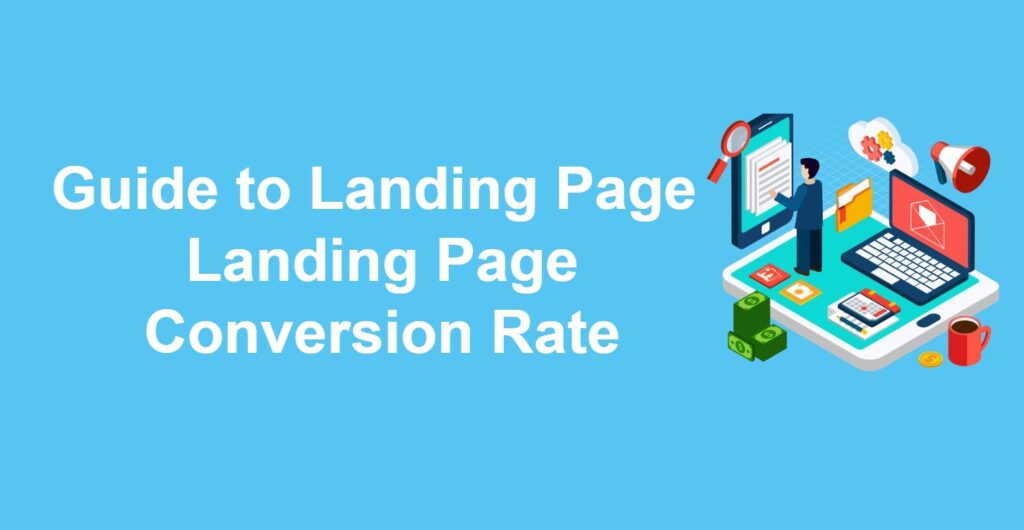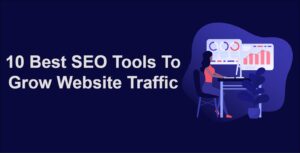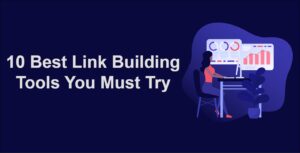Landing pages play a pivotal role in any digital marketing campaign. These focused web pages are designed to capture leads, drive sales, and achieve specific goals. However, creating a landing page is only half the battle; optimizing its conversion rate is the key to success.
In this comprehensive guide, we’ll take you through everything you need to know about landing pages and how to boost their conversion rates.
A well-designed and optimized landing page can significantly impact your digital marketing efforts. By understanding the intricacies of landing pages, crafting persuasive content, optimizing for conversion, and continually analyzing performance, you can create landing pages that convert visitors into loyal customers.
Landing page optimization is an ongoing process. Regularly test and tweak elements to achieve the best results. With the right strategy and dedication, you can leverage landing pages to achieve remarkable conversion rates and drive your business’s success to new heights.
What is a Landing Page?
A landing page is a standalone web page created with a single purpose in mind – to convert visitors into leads or customers. Unlike a typical website page, a landing page is designed with minimal distractions, focusing on a clear call to action (CTA).
Why Landing Pages Are Crucial for Digital Marketing Success
Landing pages are crucial components of digital marketing strategies, serving as dedicated web pages designed to drive conversions and generate leads. Here’s a summary of why landing pages matter based on the provided search results:
Importance of Landing Pages
Targeted Conversion Focus
Landing pages are specifically designed to convert visitors into leads or customers by offering a streamlined path to a particular action, such as signing up for a newsletter or making a purchase. This targeted approach enhances the likelihood of conversion compared to general web pages.
Improved User Experience
By providing relevant and concise information tailored to the visitor’s needs, landing pages enhance user experience. This focused content helps guide users toward making informed decisions, thereby increasing conversion rates.
Lead Generation
Landing pages are effective tools for capturing leads by offering valuable resources (like eBooks or free trials) in exchange for contact information. This process transforms anonymous visitors into potential leads that can be nurtured through targeted marketing.
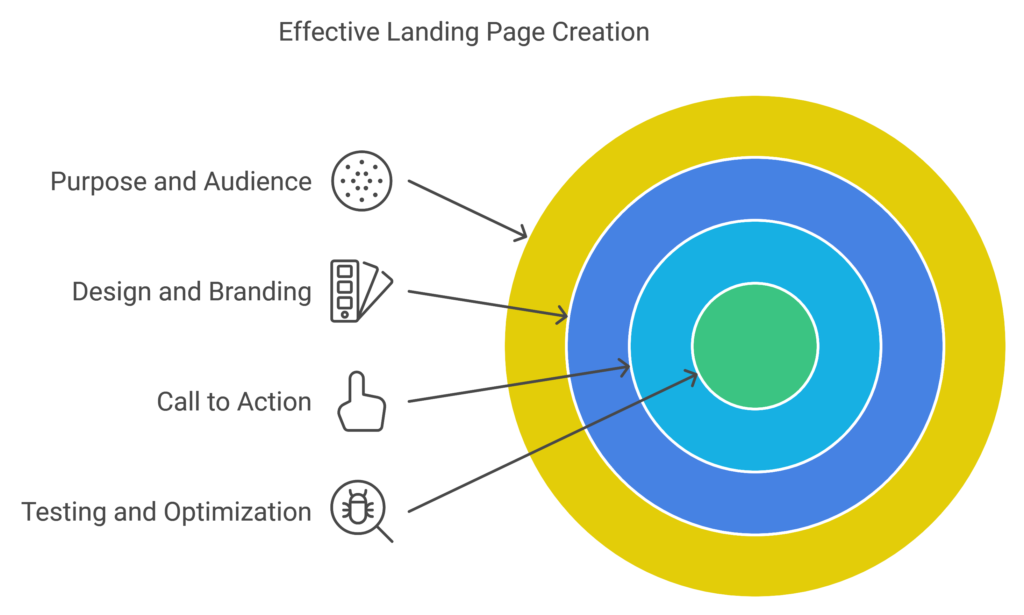
Enhanced Measurement and Data Insights
Marketers can track user behavior on landing pages, allowing them to gather valuable insights into the effectiveness of their campaigns. This data is vital for optimizing future marketing efforts and improving overall performance.
Higher Search Engine Rankings
Optimized landing pages can improve a website’s search engine visibility, attracting more traffic and increasing the chances of conversion. By focusing on specific keywords and content relevant to user queries, landing pages can enhance SEO efforts.
Increased Credibility
Professionally designed landing pages build trust and credibility with visitors. A well-crafted page reflects positively on the brand and encourages visitors to take action.
A/B Testing Opportunities
Landing pages provide an excellent platform for A/B testing different elements (such as headlines, CTAs, and images) to determine which variations yield the highest conversion rates. This iterative process helps refine marketing strategies over time.
Segmentation and Personalization
Businesses can create multiple landing pages tailored to different audience segments, allowing for personalized messaging that resonates with specific groups. This segmentation improves engagement and conversion potential.
Cost-Effectiveness in Advertising
When used in conjunction with pay-per-click (PPC) advertising, dedicated landing pages can significantly enhance ad performance by ensuring that visitors land on a relevant page that aligns with their expectations set by the ad.
Building Brand Identity
Landing pages serve as an opportunity to communicate brand values and messaging clearly, helping to establish a strong brand identity among potential customers.
Landing pages are indispensable tools in digital marketing that drive conversions, generate leads, and provide valuable insights into audience preferences. Their targeted nature, combined with the ability to measure performance and optimize content, makes them essential for any business looking to enhance its online presence and achieve marketing goals effectively.
Types of Landing Pages
There are two main types of landing pages: lead generation landing pages and click-through landing pages. Lead generation pages collect user information, while click-through pages warm up visitors before guiding them to make a purchase or take another desired action.
Comparing landing page vs website
| Aspect | Landing Page | Website |
|---|---|---|
| Purpose | Designed for a specific marketing or advertising campaign with a single, focused call-to-action (CTA). | A broader online presence with multiple pages and various types of content. |
| Content | Typically contains minimal content, focusing on the message related to the campaign or CTA. | Contains multiple pages with diverse content, including an about page, blog, contact page, and more. |
| Navigation | Limited or no navigation options, with the primary goal of guiding visitors toward the desired action. | Offers extensive navigation, often including menus and submenus to explore different sections. |
| Design | A simplified design with minimal distractions, designed to keep visitors focused on the CTA. | Can have a more complex design, with branding elements, headers, footers, and more. |
| URL Structure | May have a unique URL or subdomain related to the campaign, often shorter and simpler. | Typically follows a standard domain structure with multiple subpages and URLs. |
| SEO Focus | Usually less emphasis on search engine optimization (SEO) since it’s campaign-specific. | Emphasizes SEO with optimization for various keywords and topics. |
| Tracking and Analytics | Primarily focused on tracking and analyzing the performance of the specific campaign. | Tracks overall website performance, individual pages, and user behavior across the site. |
| Conversion Rate | High emphasis on conversion rate optimization (CRO) for the specific CTA or campaign. | May have different conversion goals across various pages, such as form submissions, product purchases, or content engagement. |
| Updates | Typically temporary and may be replaced with new landing pages for different campaigns. | Ongoing updates and maintenance, with the addition of new content, features, and improvements over time. |
| Examples | Product launch page, webinar registration page, event sign-up page. | Homepage, about us page, blog post, e-commerce product listings. |
It’s important to note that landing pages and websites have distinct purposes and characteristics and can complement each other within a broader digital marketing strategy.
Landing pages are often used to funnel traffic and capture leads, while websites provide a more comprehensive online presence.
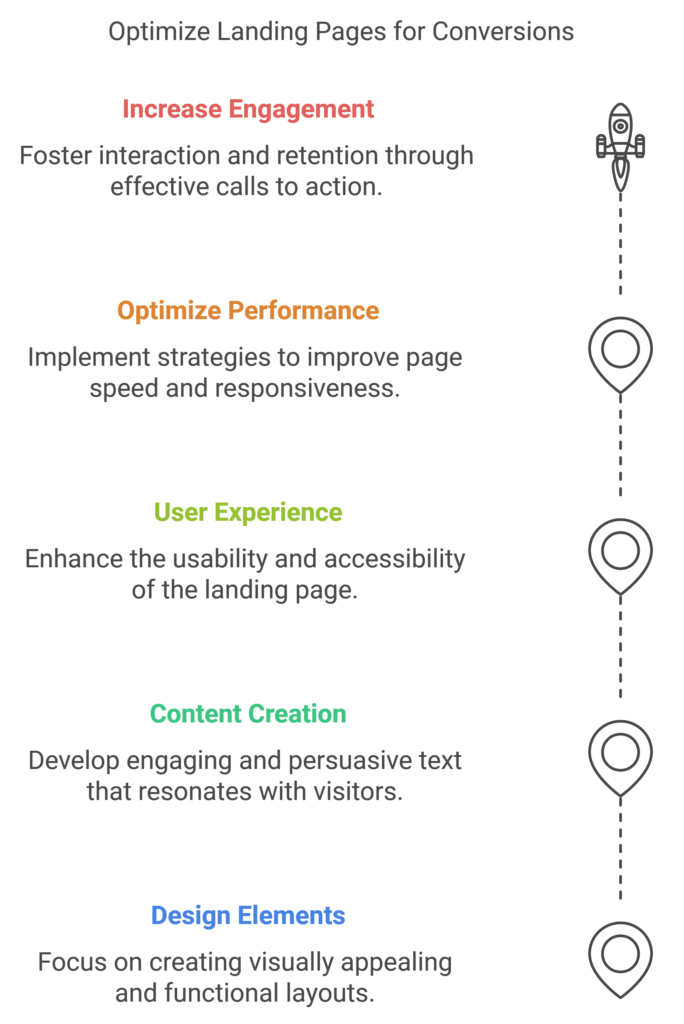
Landing Page Examples
Ebook Download Landing Page
-
- Purpose: To capture leads and promote an ebook.
- Content: Brief description of the ebook, an enticing image of the cover, a form for visitors to submit their information to receive the ebook.
- Design: Clean and simple design, highlighting the value of the ebook and the form prominently.
- Call-to-Action (CTA): “Download Now” or “Get Your Free Ebook.”
- Conversion Goal: Collecting visitor information (name and email) in exchange for the ebook.
Webinar Registration Landing Page
-
- Purpose: To encourage visitors to sign up for an upcoming webinar.
- Content: Information about the webinar, including date, time, and speakers, along with a registration form.
- Design: Engaging visuals, countdown timer (if applicable), and an easy-to-complete registration form.
- CTA: “Register Now” or “Reserve Your Spot.”
- Conversion Goal: Gathering attendee information for the webinar.
Product Launch Landing Page
-
- Purpose: To create excitement and generate interest for a new product.
- Content: Product images, descriptions, key features, benefits, pricing, and a pre-order or buy now button.
- Design: Visually appealing, with product images and graphics, often in a scrolling format.
- CTA: “Pre-Order Now” or “Buy Now” to encourage immediate action.
- Conversion Goal: Converting visitors into product buyers.
Event Sign-Up Landing Page
-
- Purpose: To get people to sign up for an event, such as a conference, workshop, or meetup.
- Content: Event details, schedule, speakers, and a registration form.
- Design: Professional and organized, often with a clean event schedule layout.
- CTA: “Register for the Event” or “Sign Up Now.”
- Conversion Goal: Gathering attendee information for event logistics and communication.
Lead Magnet Landing Page
-
- Purpose: To provide valuable content (e.g., a whitepaper, checklist, or template) in exchange for lead information.
- Content: Description of the lead magnet, its benefits, and a form for capturing user details.
- Design: Focus on the value of the lead magnet, typically with engaging graphics.
- CTA: “Get Your Free Guide” or “Access the Template.”
- Conversion Goal: Collecting user data, often for future marketing efforts.
Contest Entry Landing Page
-
- Purpose: To promote and encourage participation in a contest or sweepstakes.
- Content: Contest rules, prizes, and an entry form.
- Design: Eye-catching visuals, countdown timer (if applicable), and a user-friendly entry form.
- CTA: “Enter the Contest” or “Win Big.”
- Conversion Goal: Collecting participant information and generating excitement.
What is a Landing Page Conversion Rate?
The landing page conversion rate is a key metric in digital marketing that measures the effectiveness of a landing page. It represents the percentage of visitors who complete a desired action on that page, such as filling out a form, signing up for a newsletter, downloading a resource, or making a purchase.
How to Calculate Landing Page Conversion Rate
To calculate the conversion rate, you can use the following formula:
Conversion Rate=(Conversions / Total Visitors)×100
For example, if your landing page receives 1,000 visitors and 50 of them complete the desired action (like signing up for an email list), the conversion rate would be:
Conversion Rate=(50/1000)×100=5%
Average Landing Page Conversion Rates
The average landing page conversion rate varies by industry and specific goals. According to various sources:
- The average conversion rate across all industries is approximately 5.89%.
- The median conversion rate is around 4.3% based on data from over 44,000 landing pages.
- A good conversion rate generally starts at 10%, with top-performing pages achieving rates of 20% or higher.
Factors Influencing Conversion Rates
Several factors can affect landing page conversion rates, including:
- Quality of Content: Well-written, persuasive content that addresses visitor needs tends to convert better.
- Design and User Experience: A clean, intuitive design enhances user experience and encourages conversions.
- Target Audience: Understanding your audience’s demographics and preferences can help tailor your messaging effectively.
- Call-to-Action (CTA): Clear and compelling CTAs guide visitors towards the desired action.
Understanding and optimizing your landing page conversion rate is crucial for maximizing the effectiveness of your online marketing efforts. By calculating your conversion rate and comparing it against industry benchmarks, you can identify areas for improvement and implement strategies to boost performance. Regularly monitoring this metric will help you refine your approach and achieve better results over time.
Why Conversion Rate Matters
A high conversion rate translates to more leads or sales without increasing your website traffic. This makes landing page optimization a cost-effective way to improve your business’s bottom line.
Step to Create an Effective Landing Page
Crafting Compelling Headlines
Your headline is the first thing visitors see. Craft a clear and attention-grabbing headline that immediately communicates the value of your offer.
How do you write a compelling headline?
Here are 5 key points to explain how to write a compelling headline:
1. Clarity and Specificity:
A compelling headline should convey your content’s main idea or benefit. It must be specific so readers instantly understand what to expect.
2. Engaging Language:
Use action verbs and power words that inspire action or evoke emotions. Words like “discover,” “essential,” or “amazing” can make your headline more engaging.
3. Highlight the Value:
Clearly state what readers will gain or learn from your content. Headlines that promise value or solve a problem tend to be more compelling.
4. Curiosity and Intrigue:
Pose a question, provide a teaser, or use a provocative statement to create curiosity and entice readers to click and explore further.
5. Reader-Centric Approach:
Address the reader using “you” or “your” to make the headline more about them. This personalizes the content and increases reader engagement.
Crafting Persuasive Copy
Use persuasive copy that highlights the benefits of your offer and addresses visitors’ pain points. Keep it concise and easy to read.
High-Quality Visuals
Visual elements, such as images and videos, can help convey your message and engage visitors. Use high-quality visuals that resonate with your target audience.
Clear Call to Action (CTA)
Your CTA should be clear, actionable, and prominently placed on the page. Use contrasting colors to make it stand out.
Building Trust with Social Proof
Include testimonials, reviews, and trust badges to build credibility and trust with your visitors.

Optimizing for Conversion Rate
A/B Testing
A/B testing involves creating two versions of a landing page and testing different elements to see which one performs better. Test headlines, CTAs, visuals, and more to identify what resonates with your audience.
Mobile Responsiveness
Ensure your landing page is responsive on all devices. A significant portion of web traffic comes from mobile users, and a mobile-friendly landing page is essential for a seamless user experience.
Page Load Speed
A slow-loading landing page can lead to high bounce rates and lower conversion rates. Optimize images and minimize unnecessary elements to ensure quick load times.
Analyzing and Improving Conversion Rates
Google Analytics
Utilize Google Analytics to track your landing page’s performance. Monitor metrics such as bounce rate, time on page, and conversion rate to identify areas for improvement.
Heatmaps and User Behavior
Heatmaps provide insights into how users interact with your landing page. Analyze click patterns, scroll depth, and cursor movement to optimize page layout and placement of key elements.
User Feedback
Collect feedback from users through surveys or feedback forms. This direct input can help you understand pain points and make necessary adjustments.
Case Studies: How Landing Page Optimization Boosted Sales
Here are three case studies demonstrating how effective landing page optimization strategies led to increased sales:
Case Study 1: Telecom Company A/B Testing
Overview: A telecom company sought to improve its digital engagement and conversion rates through targeted landing page optimization.
Strategies Implemented:
- The company partnered with a landing page optimization agency that focused on A/B testing.
- They experimented with different headlines and call-to-action (CTA) phrases to determine which versions resonated best with visitors.
Results:
- The telecom company achieved a remarkable 76% increase in conversion rates after optimizing headlines and CTAs.
- This significant improvement not only boosted sales but also set a new standard for their digital marketing efforts, showcasing the effectiveness of data-driven strategies in enhancing user engagement.
Case Study 2: Software Service Provider Using Heat Maps
Overview: A software service provider faced stagnant conversion rates and sought to revamp its landing page to drive more sales.
Strategies Implemented:
- The company utilized heat maps to analyze user behavior on their landing page, identifying which areas received the most attention.
- Based on this data, they redesigned the landing page, reducing content clutter and focusing on key elements like CTAs and service benefits.
Results:
- The optimized landing page resulted in an impressive 95% increase in conversion rates.
- This redesign not only enhanced user experience but also significantly boosted sales, demonstrating how targeted data analysis can inform effective design decisions.
Case Study 3: E-commerce Checkout Optimization
Overview: An e-commerce business struggled with high cart abandonment rates and aimed to improve its checkout process through landing page optimization.
Strategies Implemented:
- The company simplified the checkout process by streamlining the landing page layout and presenting a benefit-oriented CTA.
- They also incorporated personalized product recommendations directly on the landing page to encourage additional purchases.
Results:
- These changes led to a 35% increase in checkout completions, significantly reducing cart abandonment.
- By optimizing the landing page for user engagement and clarity, the e-commerce business successfully increased sales and improved overall customer satisfaction.
These case studies illustrate how strategic landing page optimization—through A/B testing, data analysis, and user-focused design—can lead to substantial increases in conversion rates and sales. By implementing targeted strategies tailored to their audiences, these businesses effectively enhanced their marketing performance and achieved significant financial gains.

